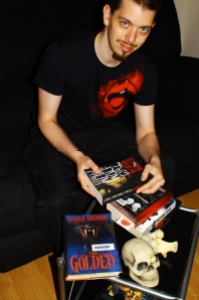In a fairly leafy, suburban street in north Milton Keynes, just round the corner from an area of parkland, there sits a secretive and foreboding house. There are no windows on the front of this house nor means of seeing inside. There are no prying eyes here. The stark, concrete walls convey secrets – details of what goes on behind the closed door. A hanging basket adds a flash of colour – perhaps a diversionary tactic, intended to distract passersby? Whilst no eyes can look in, eyes can look out – yes, there’s a peephole.
So, what can you expect to find inside?
Well, if you are brave enough to venture within these walls, you will find…
. . .
. . .
. . .
(And, no, he’s not a serial killer, even though he does have the perfect house for such a hobby.)
There is nothing sinister here, unless you happen to have a monkey phobia (there are certainly a lot of the little critters adorning his shelves and window ledges) or aversion to industrial music. Whilst, from the outside, this semi-detached maisonette looks like it should house a serial killer, the inside is a different story – Craig’s home is warm and welcoming, acting as something of a drop-in centre for all his friends. He has something of an open door policy, not to mention an open shelves policy when it comes to book borrowing.
Craig’s house contract forbids him from engaging in ‘immoral activities’ and he sometimes wonders if reading his horror books and watching his DVD collection may contravene that. One section of his bookshelves contains his visually-arresting copies of Transmetropolitan, the graphic novel written by Warren Ellis, which has plenty to offer in the way of immoral subject matter.
“Spider Jerusalem’s world is a frightening one,” explains Craig. “There’s no free press – all information is controlled by the government. Our protagonist is a journalist who’s not afraid to fight and battle, often physically, to get the truth told. Every day is a struggle for him – he’s fighting for survival. You have to use weapons and take stimulants, otherwise you don’t stand a chance.
There is a lot of police brutality, violence and bloodshed, but it’s written in such powerful and striking language (‘truncheons on shields; transient blood’). The writing is genius – such strong writing isn’t common in graphic novels, in my experience, so this series really stands out for me.”
Now, whilst the world is (somewhat) calm and society remains (somewhat) intact, Craig makes his regular journey to his office job, but he doesn’t leave the horror behind – he always keeps a book in his desk drawer. He normally reads two books simultaneously, with one on the go at home and another at work, ensuring he gets his horror fix in either location.
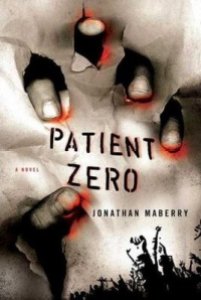 During his lunch breaks at work, he powers through books at a ferocious pace: it’s just him and the book, seemingly quite literally where Craig is concerned. He effectively loses his hearing (“sensory deprivation”, as he calls it) and essentially becomes cut off from his surroundings – it takes a lot to penetrate it and pull him back into reality. Without any effort, Craig can shut out the outside world, no matter what is going on around him, no matter where he is, be it at home or at work, and this is certainly a rare (and very handy) talent.
During his lunch breaks at work, he powers through books at a ferocious pace: it’s just him and the book, seemingly quite literally where Craig is concerned. He effectively loses his hearing (“sensory deprivation”, as he calls it) and essentially becomes cut off from his surroundings – it takes a lot to penetrate it and pull him back into reality. Without any effort, Craig can shut out the outside world, no matter what is going on around him, no matter where he is, be it at home or at work, and this is certainly a rare (and very handy) talent.
When he’s not sitting reading, either at his desk or outdoors, another way that Craig likes to spend his lunch breaks is browsing in bookshops, hoping to hunt down something good. One book that Craig picked up whilst on a wander one lunch break is Patient Zero by Jonathan Maberry, New York Times best-selling author and winner of multiple Bram Stoker Awards. “Patient Zero is fast-paced, detailed and violent,” Craig explains, adding that the opening statement represents this very well.
“When you have to kill the same terrorist twice in one week, then there’s either something wrong with your skills or something wrong with your world. / And there’s nothing wrong with my skills.”
– Patient Zero by Jonathan Maberry
The main character, Joe Ledger, is a police officer and martial arts expert, who finds himself heading up a specialist team sent out to combat a new form of terrorist threat – a zombie plague.
 “What intrigued me was the idea of zombies being utilised as a weapon – that got my attention,” he says. “I was originally apprehensive about the terrorist topic, thinking it would be handled in a very biased and Americanised, patriotic sort of way – I’m generally not a huge fan of that sort of thing – but it wasn’t like that at all. I also hadn’t read anything this furiously-paced before – everything is very urgent, very commanding. The pace sweeps you along with it – you don’t have a choice in the matter! But, despite the manic pace, it still achieves strong characterisation, which is impressive.
“What intrigued me was the idea of zombies being utilised as a weapon – that got my attention,” he says. “I was originally apprehensive about the terrorist topic, thinking it would be handled in a very biased and Americanised, patriotic sort of way – I’m generally not a huge fan of that sort of thing – but it wasn’t like that at all. I also hadn’t read anything this furiously-paced before – everything is very urgent, very commanding. The pace sweeps you along with it – you don’t have a choice in the matter! But, despite the manic pace, it still achieves strong characterisation, which is impressive.
There are scenes involving martial arts and the violence is described in a very technical and precise way. This, combined with the heavy use of dialogue, puts you right in there, amongst all the action, which is perfect for a zombie book.”
In contrast to the bone-crunching violence and breakneck pace seen in books like Patient Zero, Craig enjoys lighter and more laid-back reads. One such book is Lonely Werewolf Girl by Scottish author Martin Miller, a tale of werewolves in the modern age, some of whom are punks, musicians and troubled teenagers, but in which the main character, Kalix, is ruthlessly pursued by hunters and members of her own werewolf clan.
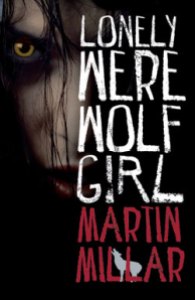 “Her sister can use magic, her sister’s best friend is a fire demon and her brother is a cross-dresser – need I say more?” asks Craig. “Whilst the book is a fairly laidback fantasy novel in certain respects, there are also elements which mean that, for me, this constitutes horror. For example, Kalix gravely wounds her own father in a fight, so she is rejected by her clan, who try to hunt her down and kill her as a result, and she ends up homeless on the streets of London. She has an addiction to laudanum, so whilst she is a strong and powerful character, she is simultaneously very vulnerable and you really do feel for her and her desperate situation.”
“Her sister can use magic, her sister’s best friend is a fire demon and her brother is a cross-dresser – need I say more?” asks Craig. “Whilst the book is a fairly laidback fantasy novel in certain respects, there are also elements which mean that, for me, this constitutes horror. For example, Kalix gravely wounds her own father in a fight, so she is rejected by her clan, who try to hunt her down and kill her as a result, and she ends up homeless on the streets of London. She has an addiction to laudanum, so whilst she is a strong and powerful character, she is simultaneously very vulnerable and you really do feel for her and her desperate situation.”
Craig says that books like Lonely Werewolf Girl remind him of where it all started for him. When he was a child, sci-fi and fantasy books were something of a gateway drug, later leading him astray, down the horror literature path. Series like R L Stine’s Goosebumps wreaked havoc with his dreams and kept him awake at night, with The Haunted Mask being a particular favourite, in which a little girl discovers that a Halloween mask has effectively become her own face and she’s unable to remove it.
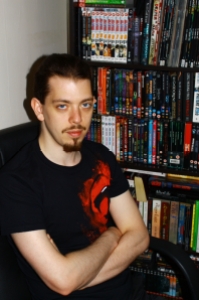 In much the same way that childhood favourites sometimes stopped him from sleeping, it seems that more recent reads, such as modern, adult vampire tales, can stop Craig from working! Sometimes Craig will become completely absorbed in something and then has trouble segregating from it and returning to work (only sometimes, mind, should his boss ever see this!). One book that Craig almost wishes he hadn’t got so wrapped up in one weekday lunchtime is The Golden by Lucius Shepherd.
In much the same way that childhood favourites sometimes stopped him from sleeping, it seems that more recent reads, such as modern, adult vampire tales, can stop Craig from working! Sometimes Craig will become completely absorbed in something and then has trouble segregating from it and returning to work (only sometimes, mind, should his boss ever see this!). One book that Craig almost wishes he hadn’t got so wrapped up in one weekday lunchtime is The Golden by Lucius Shepherd.
Craig talks about how the book essentially permeated and consumed him: “The descriptions are really amazing – they firmly weaved their way into my brain and fucked me up! One day at work, after reading The Golden on my lunch break, I was genuinely struggling to get on with things – I couldn’t stop thinking about the elaborate descriptions of the Castle Banat interior, where it’s almost a case of worlds within a world. There, time and space is distorted, floors and walls are actually a sea of writhing bodies – it’s beautiful, yet haunting and horrifying, all at the same time.”
Vampires are a favourite of Craig’s and he encounters them himself on an average Friday night, as it happens, for Friday night is Gaming Night. Once a week, a group of Craig’s friends gather round his to play a supernatural- and horror-themed role-play game (World of Darkness) where storytelling is the focus: the characters, plot and mood are more important than sticking rigidly to a set of rules. Instead, the rules simply provide a framework, intended to help the gamers develop their universe: “It’s collective and interactive storytelling,” he explains. “We all draw on elements from our own lives, using inspiration from things that are familiar to us, and this gets crossed with vampires, werewolves and all sorts of supernatural creatures and scenarios.”
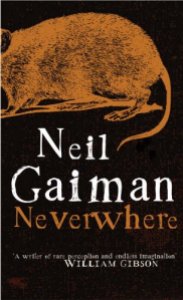 Just as Craig’s gaming crew form bonds with their World of Darkness characters (or alter egos), there are likewise many characters from the world of horror literature that really stick with readers, seemingly following them wherever they go in life. For Craig, this is typified by the writing of Neil Gaiman, whose brilliant creations, such as the Rat-Speakers in Neverwhere and Wednesday (Odin) from American Gods, wander into Craig’s consciousness on a regular basis. Gaiman is very dear to Craig, evidenced by the signed memorabilia items on his shelves, and he speaks about him with huge enthusiasm and affection.
Just as Craig’s gaming crew form bonds with their World of Darkness characters (or alter egos), there are likewise many characters from the world of horror literature that really stick with readers, seemingly following them wherever they go in life. For Craig, this is typified by the writing of Neil Gaiman, whose brilliant creations, such as the Rat-Speakers in Neverwhere and Wednesday (Odin) from American Gods, wander into Craig’s consciousness on a regular basis. Gaiman is very dear to Craig, evidenced by the signed memorabilia items on his shelves, and he speaks about him with huge enthusiasm and affection.
His favourite Gaiman novel is Neverwhere, which expands on the preceding TV series, of which Craig is also a big fan. “That’s something I love about Gaiman, his characters and worlds are clearly real to him, it feels like they grow and evolve with him, like they are a force all of their own – it’s as if they are alive.”
“One of my favourite Neverwhere characters is one of the villains, Mr Vandemar, who likes nothing more than death and destruction – he even eats live animals and practises his golf swing with live toads. However, one of the most disturbing aspects of the book is when the lead character, Richard Mayhew, becomes invisible to the World after falling through the cracks of reality – nobody can see him anymore, but he’s still there.
 I love that Gaiman incites the beast of London – he writes about such dark and violent things, but the darkness is drawn from reality. In the case of Neverwhere, Gaiman was writing about London whilst living there himself – there’s such authenticity in the world on those pages.”
I love that Gaiman incites the beast of London – he writes about such dark and violent things, but the darkness is drawn from reality. In the case of Neverwhere, Gaiman was writing about London whilst living there himself – there’s such authenticity in the world on those pages.”
And so it goes that often, when arriving in Islington for a night of clubbing, Craig finds himself thinking of the Angel Islington, guarding the sewers below. He’ll often pause for a moment, to think of London Below and all its unusual inhabitants, but it’s safe to say, wherever he goes in the City and whatever he gets up to, Craig will always take care to ‘mind the gap’.
EMMA ROBINS


